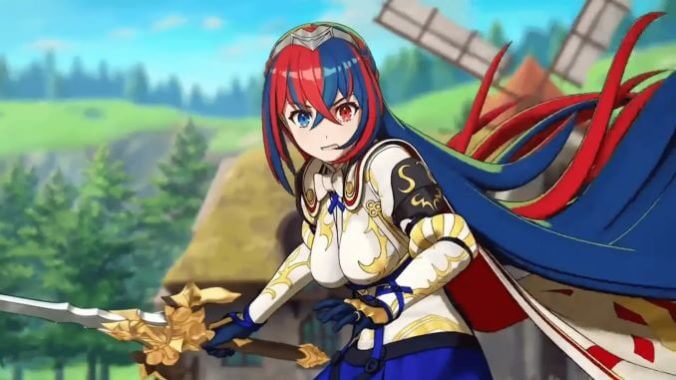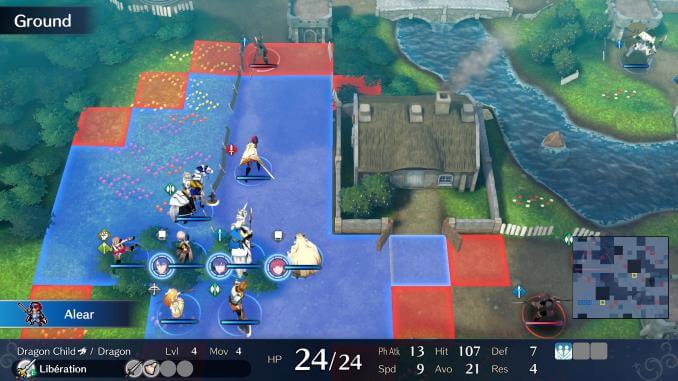Fire Emblem: Engage Gets a Little Lost on Its Way Back to Basics

About a decade ago, the state of the Fire Emblem franchise of tactical role-playing games was in a precarious place. Its previous two entries—Fire Emblem: Shadow Dragon, a remake of the original Fire Emblem, and Fire Emblem: New Mystery of the Emblem, a remake of the original’s sequel—underperformed critically and commercially. New Mystery became the first Fire Emblem since The Blazing Blade to not receive a localization in the West. And thus, Nintendo gave Fire Emblem’s developer, Intelligent Systems, an ultimatum: if their next game failed to sell more than 250,000 copies, it would be the series’ final venture.
The issue with Fire Emblem is also one of its greatest assets. Fire Emblem is an even more acute example than Pokémon of how simple numbers and formulae can lead to a rewarding and deep gameplay loop. The simplicity of Fire Emblem’s format and progression means if a player enjoys one entry, they will inevitably enjoy most if not all of the others. Unfortunately, for Fire Emblem and Pokémon alike, it becomes difficult to embellish on this idea without feeling bloated, disconnected, or tedious. As RPGs (and, more broadly, games as a whole) have evolved over time, Fire Emblem has struggled to innovate and keep up with trends of the time.
Intelligent Systems threw many ideas at the wall, several of which would have altered the feeling and aesthetic of the series entirely, such as setting the game in the modern era, or having it take place on Mars. Instead, they landed on the game being something of a “Best Of” compilation of the series’ many gimmicks and systems, including marriage, a playable second generation, a customizable player avatar, and even characters from past entries making an appearance. The game would also include a Casual Mode to attract new players who wanted to play the game for the story, or for the matchmaking aspect of the gameplay. This game would be titled Fire Emblem: Awakening, and it would rapidly sell record numbers for the series and surpass Nintendo’s 250,000 challenge in little over a week. Elements of Awakening have since become quintessential to the series and define how it’s thought of in the mainstream—it’s a game full of quirky, lovable anime characters who you can ship together however you see fit, a convention that has grown in popularity and now become typical among RPGs.
Fire Emblem: Engage is quite similar to Awakening in its reverence for the franchise’s past, but instead of a coda, it’s a song of celebration. Engage had big shoes to fill, being the direct successor to the incredibly enduring and ambitious Three Houses. Just one playthrough of Three Houses could take upwards of 100 hours to complete, and that would leave you with three other storylines to experience. I would wager most people that love Three Houses haven’t even seen everything there is to see in it. Three Houses stands as something of a victory lap for the series, a type of game we’ve increasingly seen in the last five or so years starting with, perhaps, Breath of the Wild—-a game that’s so large and with so much breadth, you’re left wondering how it could possibly be anything but the final game in the series.
Instead of going bigger (something I struggle to imagine is possible), Engage went the opposite direction. Inspired by many of the franchise’s older entries, Engage has a single campaign that can be completed in a modest 20 or so hours with few missable units, greatly curbed social elements, a smaller hub area, and a more classic, black-and-white story. It would again include many characters from previous games, only this time they would be integral parts of the gameplay, appearing as mentor-like spirits that give your units new abilities. Initially, I found this prospect exciting. As games have had to become more and more of an event to succeed, it seemed refreshing to have a game from a major series release with less fanfare and fewer bells and whistles. Unfortunately, Engage often wrings its hands, nervous that its simple pitch might underwhelm those expecting a more bombastic experience. It tentatively asks, “you’d like it if this was included, right? After all, you liked it when we did it before.”
Engage’s most apparent gameplay trait is the aforementioned use of previous Fire Emblem protagonists as obtainable items. Imbued in Emblem Rings, these characters—like Marth, Ike, Roy, and Celica—come with unique weapons, abilities, buffs, and niches that can only be utilized by equipping them. For example, Genealogy of the Holy War’s Sigurd specializes in movement. When equipped, you receive an immediate bonus to your movement, allowing that unit to move more spaces than they otherwise would be able to. As your bond develops with Sigurd, you earn passive skills like Canter, which allows you to move again after acting, and Momentum, which grants 1+ attack for every space you moved approaching your enemy to your first hit. After you have bonded with Sigurd enough, you can permanently inherit these abilities so they can be used even when Sigurd isn’t equipped, which allows an astute level of customization.

-

-

-

-

-

-

-

-

-

-

-

-

-

-

-

-

-

-

-

-

-

-

-

-

-

-

-

-

-

-

-

-

-

-

-

-

-

-

-

-








































